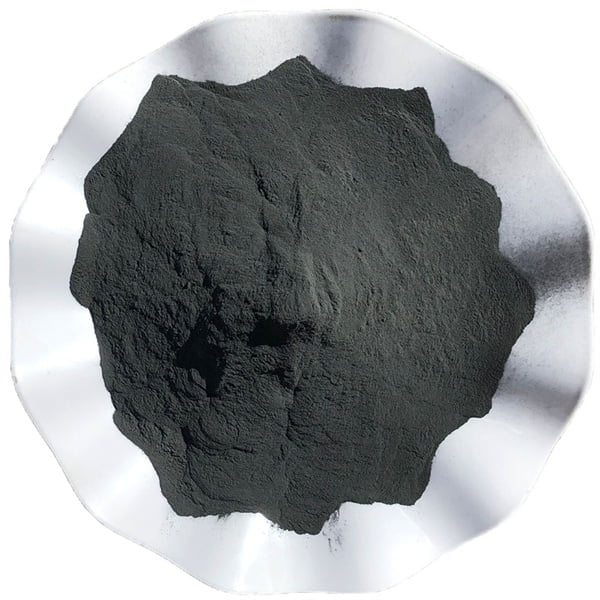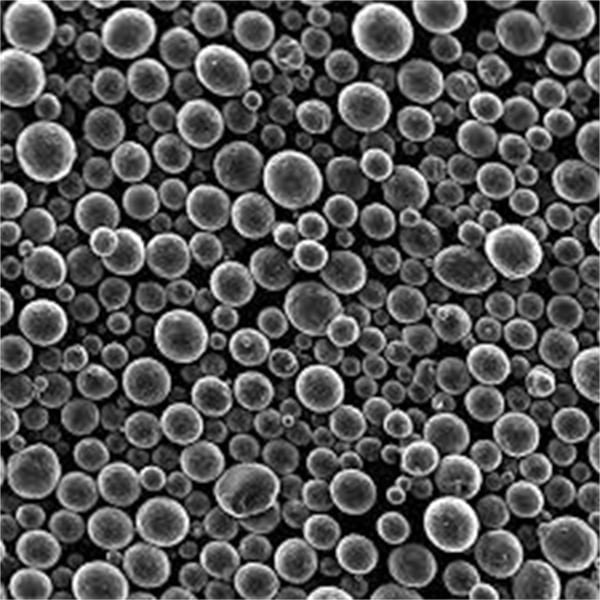3D Metal Powders
Table of Contents
3D metal powders are materials used in additive manufacturing technologies to produce metal parts and components. This guide provides a detailed overview of different types of metal powders, their composition and properties, applications, specifications, pricing, and comparisons to understand their role in 3D printing metals.
Overview of 3D Metal Powders
3D metal powders serve as the raw material input for techniques like selective laser sintering (SLS), direct metal laser sintering (DMLS), electron beam melting (EBM), and binder jetting to manufacture intricate metal components with complex geometries. They come in various elemental forms or alloys.
Powders differ significantly from metal stock used in traditional subtractive manufacturing methods. Key properties like flowability, shape, particle size distribution, and purity are tightly controlled to enable precise layer-by-layer consolidation during printing.
Benefits of Using Metal Powders in Additive Manufacturing:
- Design flexibility – produce lightweight lattice structures and complex parts unachievable through machining
- Reduced waste – only use material needed unlike subtractive methods
- Shorter lead times – rapid iteration and analysis for design optimization
- Custom alloys – tailor composition and properties as per application
- Consolidation – fuse and densify powders to form solid metal parts
- Surface finishes – achieve smoothness and accuracy without additional post-processing

Types of Metal Powders
Several elemental metals and alloys are available in powder form for use across industries:
| Material | Common Alloys/Grades | Properties | Applications |
|---|---|---|---|
| Stainless steel | 316L, 17-4PH, 304L, 420 | Corrosion resistance, high strength | Aerospace, automotive, consumer products |
| Aluminum | AlSi10Mg, AlSi7Mg0.6 | Lightweight, excellent thermal conductivity | Automotive, heat exchangers |
| Titanium | Ti64, Ti6Al4V ELI | High strength-to-weight ratio, biocompatibility | Aerospace, medical implants |
| Nickel Superalloys | Inconel 718, Inconel 625 | Heat resistance, corrosion resistance | Aerospace components like turbines and combustion chambers |
| Cobalt Chrome | CoCr MP1, CoCrMo ASTM F75 | Biocompatibility, high hardness | Dental implants, orthopedic knee/hip implants |
| Copper | CuSn10, CuZn | Electrical/thermal conductivity, ductility | Electrical contacts, heat exchangers |
| Tool steel | H13, P20 | High hardness, heat resistance | Injection molds, Press brake tooling |
Particle Shape: Mostly spherical but can also be polygonal depending on production method. Improves flow and packing density.
Particle Size: Ranges from 10 to 100 microns. Narrow distribution ensures uniform layer thickness and better density.
Size Specification Systems: Mesh size (sieves separating powder), D values (statistical metric of average size).
Flowability: Quantified using Hall flowmeter funnel tests. Critical for layer uniformity. Improved by spherical particles.
Other Properties: Powder density, tap density, apparent density, pycnometer density, oxidative stability etc.
Applications and Use of Metal Powders in 3D Printing
Some common applications include:
- Lightweighting critical moving components like impellers and rotors
- Consolidating assemblies for reduced part count – engine brackets, mountings
- Customized jigs, fixtures, press and mold tooling inserts for shorter lead times
- High complexity heat exchangers, pumps, valves and manifold blocks
- Patient matched implants improving surgical outcomes
- High detail miniatures like dice towers and game pieces
Benefits vs Traditional Manufacturing:
- Reduce weight by 40-60% with lattice structures while retaining strength
- Conform precisely to CAD models unlike machining/casting
- Part count reduction via consolidations cuts assembly time/cost
- Smooth surface finishes with accurate dimensions largely eliminate post-processing
- Fast turnarounds with no expensive tooling changes
Superior Performance: Components designed specifically around additive manufacturing outperform conventionally produced equivalents. For instance, Airbus achieved weight savings of 45% using 3D printed metal brackets while maintaining equivalent strength and stiffness.
3D Metal Powder Specifications
Powder characteristics like size distribution and shape strictly control final part properties so they are supplied to tight specifications:
| Attribute | Typical Values | Standards |
|---|---|---|
| Particle size distribution | 10 to 45 microns | ASTM B214 |
| Apparent density | 2 to 5 g/cc | ASTM B212 |
| Tap density | 3 to 8 g/cc | ISO 3923/1 |
| Flow rate | 15 to 25 s/50 g | ASTM B213 |
| Residual oxygen content | 0.1% max | AMS 4999B |
| Residual nitrogen content | 0.04% max | AMS 2769E |
| Residual carbon content | 0.03% max | AMS 2769E |
Size Grades and Mesh: Mesh size refers to sieve classifications. Typical powder size ranges from -140 to +325 mesh. Finer distribution between -100 and +325 mesh improves density and surface finish.
Chemistry Conformance: Elemental composition validated against grade specification (AMS, ASTM). Critical for expected mechanical performance.
Moisture Content: Particularly important for reactive materials like aluminum and titanium. Limited to 0.1% by both ASTM B964 and ISO 22068 standards. Controlled by appropriate sealing and dry storage.
Contaminant Levels: Magnesium, Silicon, Phosphorus, Sulphur, Lead restricted to low part per million (ppm) levels via inert gas atomization and appropriate handling.
Recycled Powder Conformance: Powder reclaimed during printing closely monitored. Generally limited to 30% with tight chemistry control per ASTM F3055 and ISO/ASTM52904 standards.
How 3D Printing Metal Powder Suppliers Differ
| Basis of Comparison | Traditional Manufacturers | Specialty AM Powder Producers |
|---|---|---|
| Focus | General powder metallurgy applications | Specifically developed for AM processes |
| Alloy Grades | Standard compositions only | Custom alloys tailored for AM |
| Quality conformance | Relaxed, only basic properties | Extremely tight – chemistry, particle shape/size |
| Surface quality | Not critical, gas atomization optional | Smooth particle morphology mandatory |
| Price | Lower due to high volumes | Higher due to stricter requirements |
| Order Sizes | Large bulk quantities | As low as 5 kg based on application |
| Changes for customization | Requires high MOQs, long lead times | Rapid formula tweaks, fast production |
| Value-added services | Basic | End-to-end design optimization, parameter development, rapid sampling, post-processing, recycling |
Key Differentiators of AM Powder Specialists:
- Highly spherical powders with controlled size distribution tailored to each AM process
-chemistry control significantly beyond regular ASTM specifications to limit process variability - Ability to customize alloys and modify Properties like density, hardness etc.
- Powder life cycle management: reuse, blending, recycling, storage and safe handling
- Low minimum order quantities and faster lead times
- End-to-end design and printing services – parameter optimization for best quality
When Special Grades Make Business Sense
For prototypes, conventional alloys may suffice, but specialty powders deliver vastly superior mechanical properties for end-use production applications. The high costs quickly offset via performance gains like longer lasting components.
Supplier Price Variations for Metal Powders
Price Drivers:
- Base material and purity grade
- Stricter chemistry requirements
- Quality conformance levels
- Testing and certification
- Order volumes
- Additional services – application development, parameter optimization, part post-processing, powder reclamation and reuse
Cost Reduction Opportunities:
Larger order sizes, powder recycling, inventory planning for just-in-time delivery, testing standardization, more relaxed specifications for non-critical applications, process automation
Typical Price Ranges:
| Material | Price per Kg |
|---|---|
| Aluminum AlSi10Mg | $55 – $120 |
| Titanium Ti6Al4V | $350 – $850 |
| Nickel Inconel 718 | $120 – $500 |
| Stainless Steel 316L | $90 – $240 |
| Cobalt Chrome CoCrMo | $270 – $620 |
| Copper CuSn10 | $30 – $100 |
| Tool Steel H13 | $70 – $190 |
Cost Comparison Against Solid Barstock:
For small to medium sized parts produced additively in low volumes, metal powders allow significant per part cost savings despite higher base material prices.
Break-even is achievable at production volumes as low as 50-100 parts for components heavier than 0.5 kg. This advantage widens significantly for larger components exceeding 5 kg.
Reduced machining and minimal finish processing provides additional cost benefits versus subtractive techniques.
Procuring 3D Printing Metal Powders
Key Supplier Evaluation Criteria:
- Range of materials and compatible grades
- Powder quality certifications
- Supply reliability and minimum order quantities
- Custom alloy development capabilities
- Value-added services like parameter optimization, powder reuse, post-processing, etc.
- Overall cost savings delivered
Safe Handling Considerations
Like other metal fab processes, safety issues can arise:
| Hazard | Precautions |
|---|---|
| Fire/Explosion | Inert gas use during powder handling to prevent oxidation; eliminate ignition sources |
| Toxicity | Use dust extraction, respirators to prevent inhalation |
| Reactivity | Isolate reactive powders like aluminum/titanium with inert separators |
Special care must be taken during powder loading, operation, cleanup and storage to minimize risks. Powder containers must be electrically grounded.
Key Takeaways
- 3D metal powders exhibit specific size, shape and chemistry characteristics necessary for AM processes. Common materials include aluminum, titanium, stainless steel, Inconel superalloys, tool steel and cobalt chrome.
- Industries take advantage of optimized lightweight designs, part consolidation, and performance gains versus traditional fabrication.
- Specialist suppliers tightly control critical powder attributes and offer custom alloys plus services matching application requirements. This allows expanded adopter access via lower quantities.
- Proper handling and disposal processes are necessary considering reactivity/flammability hazards.
- Upfront costs offset by design and manufacturing benefits at production volumes as low as 50-100 pieces for medium components.

FAQ
Q: How are metal powders made?
A: Gas atomization is the most common technique where molten metal stream is disintegrated into droplets using inert gas jets. The spherical particles solidify rapidly in controlled sizes aided by water or oil quenching. Plasma atomization is also used.
Q: What size powders are optimal for common metal 3D printing?
A: 10 microns to 45 microns powder size range provides the best tradeoff between resolution, surface finish and build speed for popular printers from EOS, Concept Laser etc.
Q: How long can unused metal powder last when properly stored?
A: Up to 10 years in a moisture-proof container with desiccant bags under 20 C storage as per ASTM standards. Dry nitrogen purging allows even longer usage.
Q: Can metal printing powders be reused?
A: Yes, unused powder can be collected and blended with fresh stock after analysis up to 30% proportion. This reduces overall part costs but chemistry and particle size distribution thresholds must be met per ASTM F3055 standard.
Q: Does material choice drive 3D metal printing costs?
A: Yes, titanium and nickel superalloys command 3-5X pricing premium over stainless steel due to high raw material costs. Limited competitive sources also contribute versus steels.
Share On
MET3DP Technology Co., LTD is a leading provider of additive manufacturing solutions headquartered in Qingdao, China. Our company specializes in 3D printing equipment and high-performance metal powders for industrial applications.
Inquiry to get best price and customized Solution for your business!
Related Articles
About Met3DP
Recent Update
Our Product
CONTACT US
Any questions? Send us message now! We’ll serve your request with a whole team after receiving your message.

Metal Powders for 3D Printing and Additive Manufacturing
COMPANY
PRODUCT
cONTACT INFO
- Qingdao City, Shandong, China
- [email protected]
- [email protected]
- +86 19116340731


















